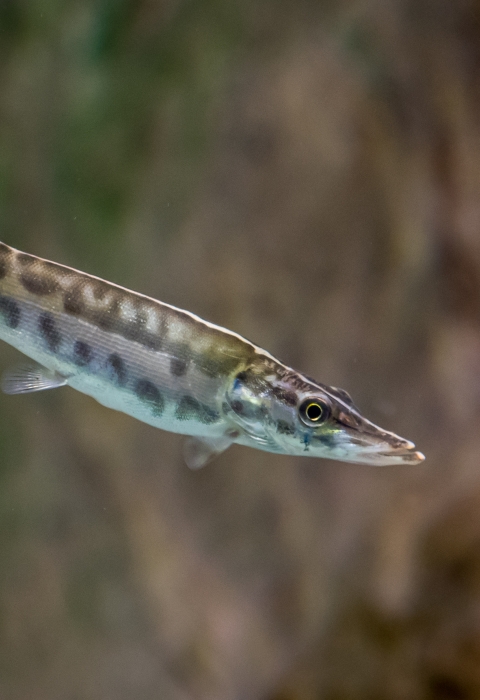Overview
Muskellunge, also known as musky or muskie, are considered a cool water species and known as the “fish of 10,000 casts” as they are very wary and elusive to recreational anglers. They are considered excellent tasting fish with a flaky white flesh. Muskellunge can reach burst speeds of 30 miles per hour and can live as long as 30 years in their natural environment.
These fish possess a large snout full of canine type teeth and needle type teeth and are a sight feeder hunting mostly during daylight. Muskellunge are a stealthy ambush predator hunting near submerged weeds and logs.
Scientific Name
Identification Numbers
Characteristics
Food
Young muskellunge feed on minnows and other small fish. Adult muskellunge prefer to eat soft rayed prey like suckers, carp and even trout. They will eat minnows, perch, sunfishes and any other fish available in its habitat. Larger muskies have been known to attack and consume nearly any living animal, invertebrates, amphibians, small rodents, waterfowl, muskrats, and smaller muskies. They have large stomachs relative to their size and can consume prey that are often more than half their length.
Habitat
Muskellunge, also known as musky or muskie, are considered a cool water species and known as the “fish of 10,000 casts” as they are very wary and elusive to recreational anglers. They are considered excellent tasting fish with a flaky white flesh. Muskellunge can reach burst speeds of 30 miles per hour and can live as long as 30 years in their natural environment.
These fish possess a large snout full of canine type teeth and needle type teeth and are a sight feeder hunting mostly during daylight. Muskellunge are a stealthy ambush predator hunting near submerged weeds and logs.
Physical Characteristics
Muskellunge commonly reach lengths of around 37 inches. The world record was caught in Hayward, Wisconsin in 1949. The fish weighed 67 pounds 8 ounces and was 60 1/4 inches long.
Life Cycle
In a natural environment the Muskellunge lifespan is about 12 to 18 years but some have been known to live as long as 30 years.
Muskellunge spawn after ice-out in early April to late May - seeking water temperatures of around 55 degrees Fahrenheit and depths less than three feet and often less than 20 inches to spawn in. Musky spawning habitat preferences are still not very well understood but the conventional wisdom is that females broadcast anywhere from 20,000 to 250,000 eggs that stick to the substrate that varies from sparse vegetation, woody debris to rock and sand bottom. Males move onto spawning grounds first and swim with females depositing milt over the eggs across long expanses of undeveloped shorelines. Most spawning activity takes place at night. Muskellunge do not build nests or care for their young, leaving soon after spawning is completed.
Muskellunge eggs hatch in about two weeks depending upon water temperatures. The musky fry absorb their yolk sac and immediately begin feeding on zooplankton (microscopic aquatic animals). Within a few days the fry become piscivorous - switching over to a diet of small fishes. The young muskellunge spend this period of their life cycle seeking prey and trying to avoid predators such as larger fish, predaceous insects, birds and even larger musky. The young grow very rapidly for the first few years.
Geography
Muskies are located in the Northern to Northeast part of the United States and up into Canada. Within North America muskellunge are native to the St. Lawrence River, Great Lakes, Hudson Bay (Red River), and Mississippi River basins.
